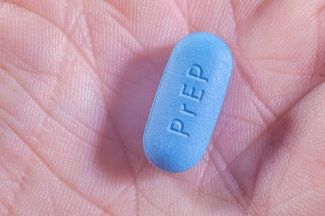One-Stop Shop Model Benefits PrEP Delivery
Investigators compared pre- and post-intervention data points at 4 clinics in Kenya.

The one-stop shop model for pre-exposure prophylaxis (PrEP) delivery may be useful for making the process more client-focused and also may gain buy-in from providers, according to a paper published in Journal of the International AIDS Society.
Investigators from the University of Washington and Kenya partnered to develop a one-stop shop model for HIV testing, counselling, and dispensing PrEP that would hopefully improve client wait time and care acceptability among clients and providers. They also hoped to do this without negatively impacting uptake or continuation, they wrote. They tested their program at 4 public clinics in Western Kenya and collected time and motion observations, interviews from clients and providers, technical assistance reports, and clinic flow maps from clinics that participated in the intervention. The clinics were in peri-urban and rural settings, the authors noted. They compared a pre-intervention period (January to December 2019) to a post-intervention period (January to November 2020) but excluded a 3-month COVID-19 washout period in order to draw their conclusions, they explained.
The study authors observed that during the 12-month pre-intervention period, intervention and control clinics initiated 385 and 212 clients on PrEP, respectively. After the intervention, intervention and control clinics initiated 410 and 220 clients on PrEP, respectively, the study authors said. Both of these groups were made up of about 60 percent female clients and about three-quarters were between the ages of 18 and 34 years. The distribution of sex, age, and HIV risk factors were similar in groups and time periods.
Additionally, intervention and control clinics had 1276 and 620 follow-up visits during the pre-intervention period and 523 and 277 follow-up visits during the post-intervention period, respectively, the study authors wrote.
Between the pre- and post-intervention periods, the average month number of PrEP initiations increased by 6 at one-stop shop clinics, the study authors said, and 2.3 at control clinics. The average monthly percent of expected follow-up visits that occurred during the pre- and post-period times decreased by 18 percent at one-stop shop clinics and by 26 percent at control clinics. While the study authors noted that median client wait time dropped dramatically from the pre- to post-period (31 minutes to 6 minutes), they also found that median provider contact time remained the same, 24 minutes and 22 minutes.
The study authors learned from provider interviews that moving PrEP delivery to a lower volume department reduced client wait time, and providers that were new to PrEP delivery expressed relief that one-stop shop workload was manageable, they wrote. Providers also said in interviews that one-stop shop clinic models consolidated the components of PrEP through relocation of the necessary supplies, like files, drugs, and appointment books. In turn, this enhanced client privacy and reduced the number of providers that had to see a single client. Providers and clients both noted in interviews that one-shop shop clinics better meet the care preferences of clients.
“Overall, the one-stop shop model achieved its intended objectives, which were to improve efficiency of service delivery and care acceptability,” the study authors concluded. “As expected, we did not observe a significant change in provider contact time, initiations, or continuations… However, it is possible that some portion of contact time is non-value-add, and future research should assess whether and how contact time could be reduced without compromising care quality.”




















